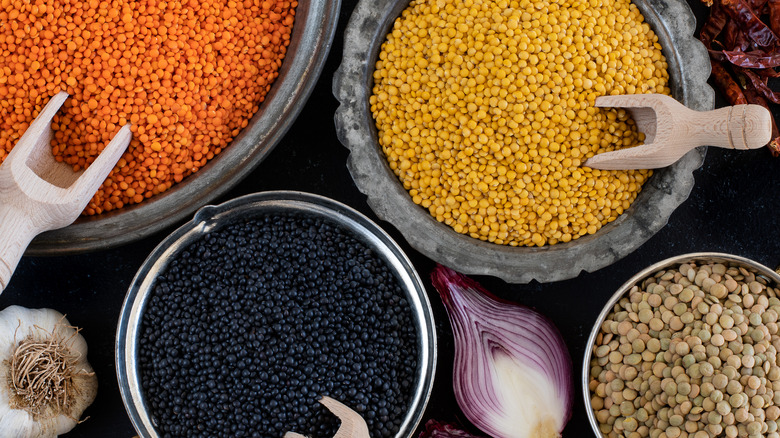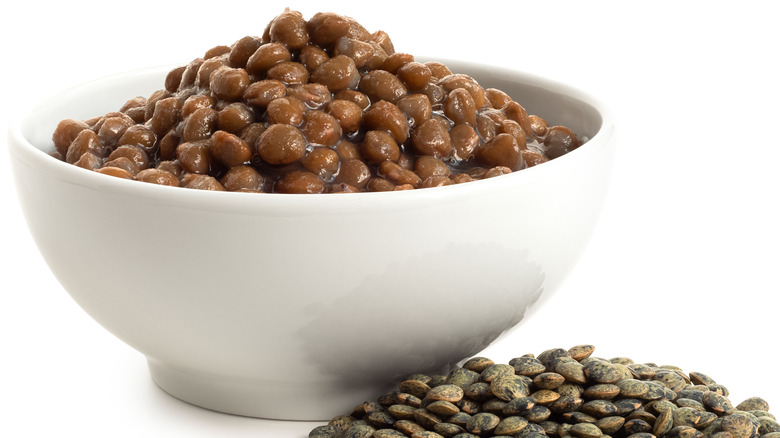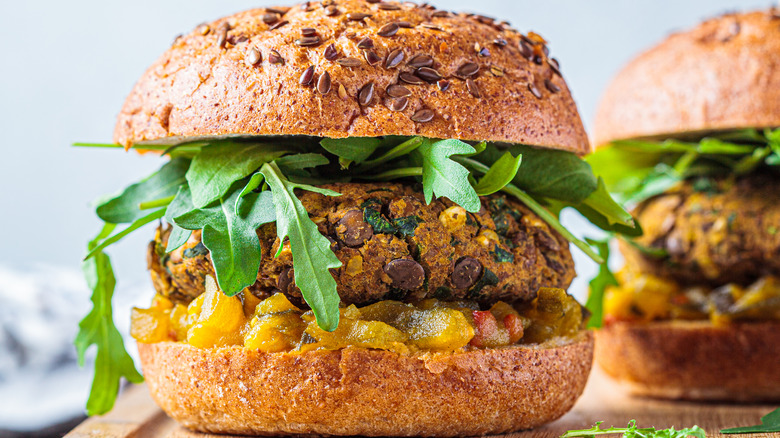What To Consider Before Cooking Canned Lentils
Lentils are classified as legumes, in the same family as peas, baked beans, and kidney beans, with an earthy and sometimes nutty flavor, according to Harvard University. These power foods offer plenty of protein, fiber, iron, folate, and potassium, making them an excellent choice for vegetarians and vegans who need a nutritional boost. They're a staple of Middle Eastern and Indian cuisine, notes NPR. Humans started cultivating lentils 10,000 years ago. As you can imagine, we've had a very long time to come up with fantastic recipes for lentils.
Whole lentils come in a wide range of hues including black, green, brown, and red. Split lentils usually come in red, orange, and yellow. These legumes can be made into just about anything, from main dishes, sides, spreads, snacks, and even flour, according to USA Pulses. If you're shopping for lentils for a specific dish, it's important to choose the variety outlined in the recipe, because buying the wrong type can affect prep and cook time.
Canned lentils require less prep time
Cooking times come into play with these legumes. Dry lentils can come whole or split. Split lentils have already had their seed coats removed, meaning there isn't as much plant material to cook or soak through, explains Lentils.org. Therefore, split lentils cook faster, allowing you to bring them to a boil and then simmer them at lower temperatures for shorter cook times than their whole counterparts. Split dry lentils boil in about 5 to 7 minutes while whole lentils usually take 15 to 20 minutes.
Canned lentils are easier to prepare versus dry lentils because they're already pre-cooked. Even so, you should still read the label of canned lentils to see what you're buying. Canned lentils may have some added salt or seasonings, but you can rinse them to reduce up to 60% of the salt content. So, should you buy split or whole lentils? What about dry versus canned? It depends on what you want to make with these versatile legumes.
What to make with canned lentils
Split lentils and canned lentils work well when mashing, mixing, or pureeing them since they blend easier. These legumes can make a thick paste, turning them into a great vegan substitute to use in place of ground beef for lentil burgers. Try something different next week with lentil meatloaf that tastes extraordinarily good! Lentil puree serves as a sturdy base for many recipes, according to Lentils.org. One cup of dry lentils converts to three cups of lentil puree. If you feel like making huge batches of lentil puree and then storing the thick paste, frozen lentil bases keep for up to six months in the freezer, notes Dieticians of Canada.
Whole lentils straight out of the can are a fantastic addition to salads, soups, and chili, says Cooking Channel. Oven-roasted lentils make a great and flavorful snack for you and your family, via My Plantiful Cooking. Lentils are a lot like peppers: Every color has a different flavor, and no two colors are exactly alike in their flavor profile, explains Plant Based FAQs. Have fun experimenting with these power-packed legumes as you discover the recipes you love the most.


